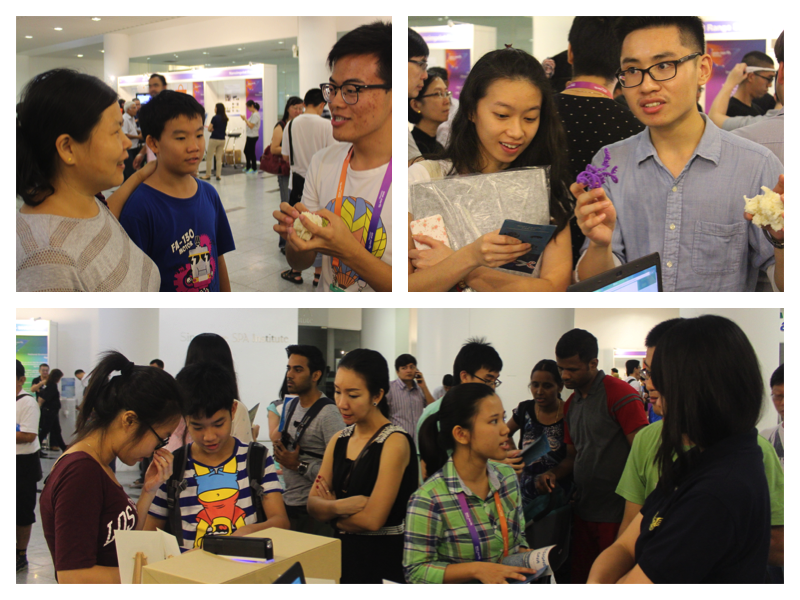CRISPRy Public Sharing
With informing the community about CRISPR gene therapy in mind, we have designed several educational materials for a nation-wide exhibition. 3D protein models and fluorescent illustrators were some of our highlights during our exhibition. Yay!!
The Making Of...
The One-North Festival is a two-day event jointly organised by the Agency for Science Technology and Research (A*STAR) and JTC. The event features leading scientist from different backgrounds to showcase cutting-edge reseach and developments efforts to reshape human life. Our team was honourly to be invited to exhibit about the CRISPR/Cas9 Technology and share our knowledge regarding CRISPR/Cas9 to the community of Singapore. The excitement from the invitation got us started with full enthusiasm and we started to think about how to come out with more creative materials so that the public is able to grasp the concept of genome editing combined Cas9-induced double stranded breaks.
As a start, we designed 4 informative cards explaining the fundamental features of the Cas9 enzyme:
1. The guide RNA 2. PAM specificity 3. Nuclease activity 4. Usage in DNA editing.




Then we went on to design a poster along with brochures to illustrate how did the the discovery and development of CRISPR-Cas9 came about:



With all these beautifully designed representations, Science can still be boring when they are explained on a 2D paper. Our idea was to print a model to accompany the 4 informative cards that we are displaying. These models would then be used when we introduce the CRISPR/Cas9's working principle to the public. Along with a Computer Aided Design(CAD) software, AutoDesk Fusion and AutoDesk MeshMixer, we designed joints into the Cas9 protein so that visitors can play with our models during the exhibition. Have a look at how we designed them at here. :)

Then, we stumbled upon the problem of explaining the usage of the catalytically inactive version of Cas9, the dCas9, to the public. Then came the idea of the dCas9 illustartor. :)
We adopted the idea from using GFP-tagged dCas9 live cell imaging of the nucleus. We decided to use fluorescent paints, a dark box, a blue-light filter and a UV-light to simulate live cell imaging. Hemp ropes are used to represent DNA and a blob attached to Cas9 is used to represent GFP-Cas9. The blob and hemp ropes are painted with different colours of fluorescent paint. When the UV lamp is turned on, only the DNA and GFP will light up.


Exhibition Day!!
Our booth setup in our exhibition! The crowd was overwhelming!


For us, the most interesting part of our exibition is that kids liked the 3D models alot! The first thing they did when they came to our booth was to grab hold of our models and start exploring the protein. Their curiosity when holding the models made us feel so happy and all the hardwork in designing the models are worthy.


CRISPRy adventurers in action! The event lasts 2 days with lots of visitors! At the end of the day, we were having sore throats but the feeling of accomplishment was soothing. :)


Future collaboration
One representative from Singapore Art&Science Museum was intrigued by our Cas9 3D models and how marvelous this tiny protein can do inside our body! She then proposed a future collaboration opportunity to exhibit our Cas9 models in the World known Art & Science Museum!


We were invited to visit Art&Science Museum and discuss our future collaboration for exhibition! Art&Science Museum is one of the hottest tourist spot in Singapore, attracting millions of visitors who are enthusiastic in art and science every year. We believe by combining Art and Science together, our future exhibition of Cas9 models can promote the CRISPR technology to a wider public and attracts different groups of people to learn more about synthetic biology.




